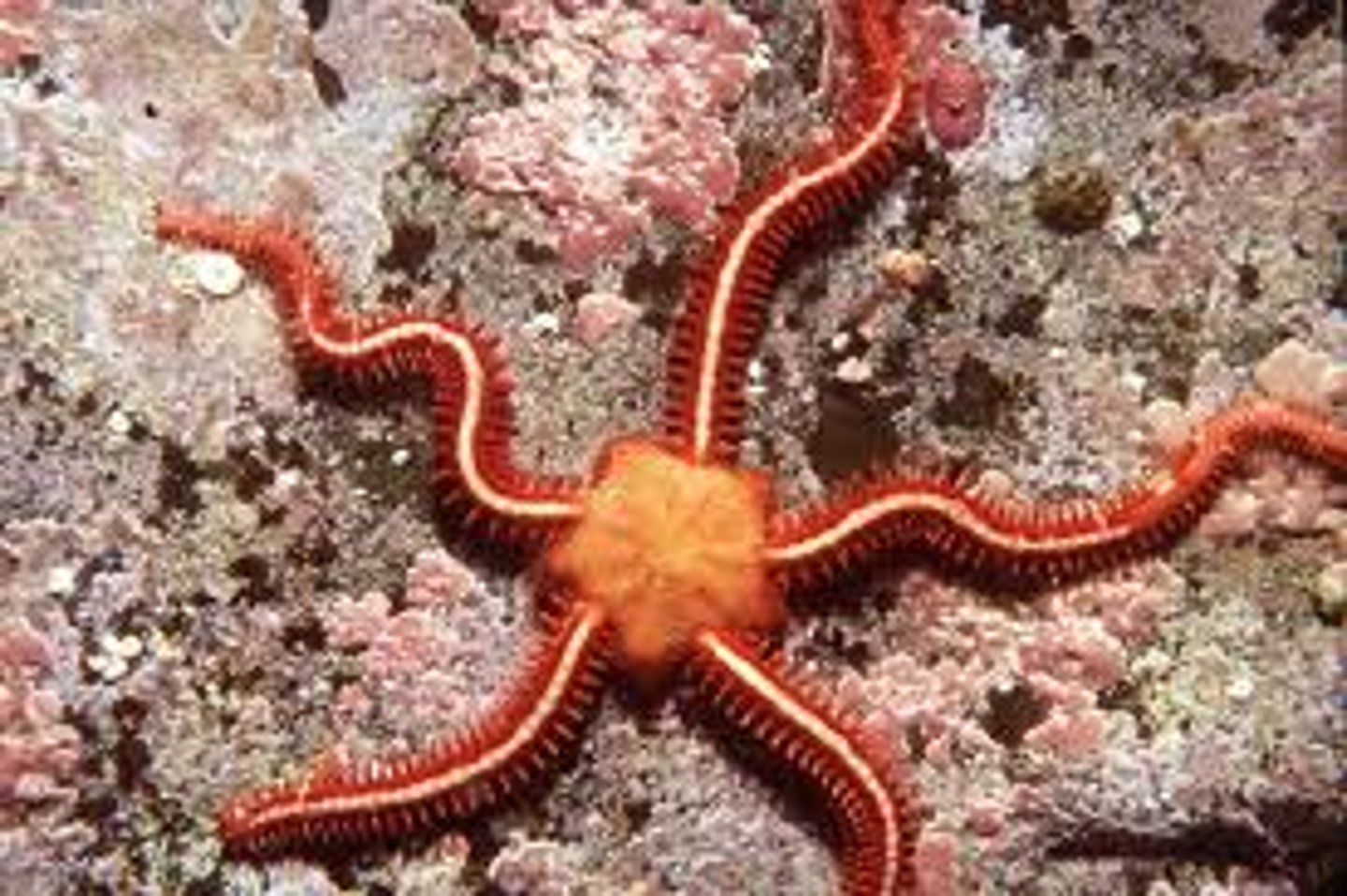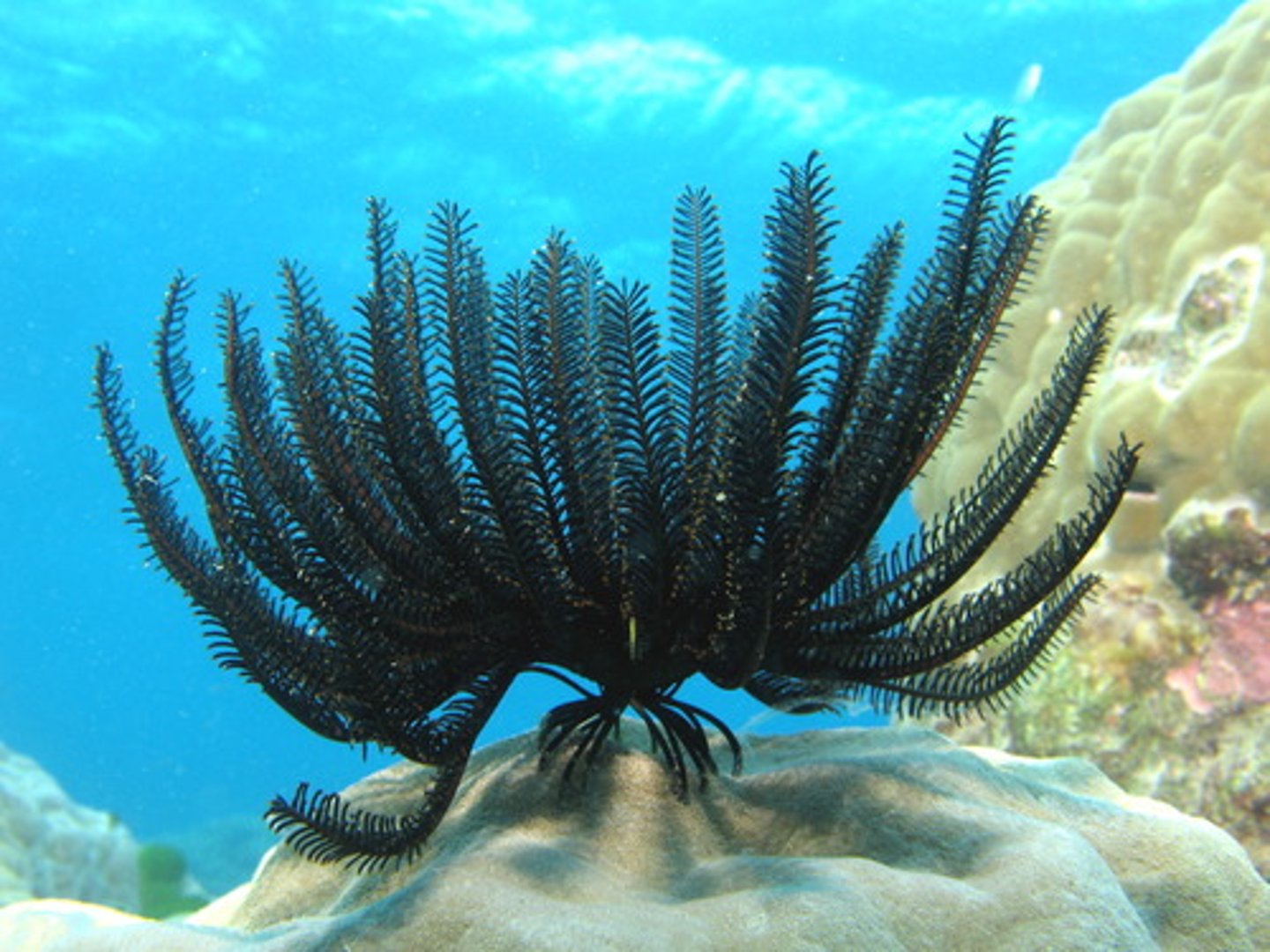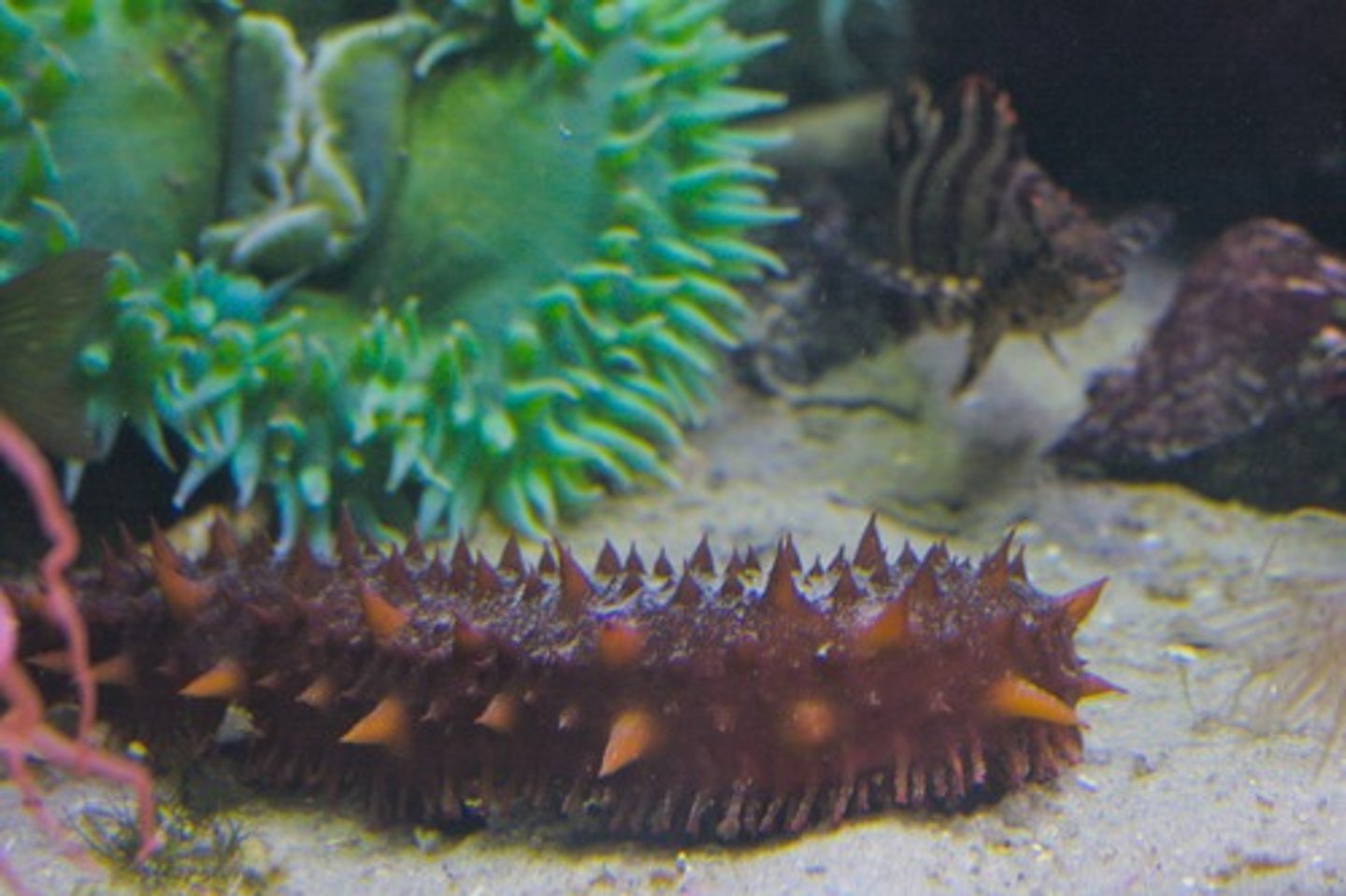Zoology Chapter 16: Echinoderms
1/39
There's no tags or description
Looks like no tags are added yet.
Name | Mastery | Learn | Test | Matching | Spaced |
|---|
No study sessions yet.
40 Terms
Phylum Echinodermata
Name literally means spiny skin, members have a calcareous endoskeleton, no head, complete digestive system, pentaradial symmetry in adults and bilateral larvae
Ossicles
Calcium carbonate plates that form the endoskeleton in Echinoderms
Water-filled Vascular System
water-filled canals used for locomotion, attachment, and/or feeding
Ring Canal
part of the water-filled vascular system that surround the mouth
Radial Canals
branch from the ring canal (arms); part of the water-filled vascular system
Lateral Canals
branch off the radial canals; part of the water-vascular system
Tube Feet
at the end of the lateral canals (often with suction cups)
Madreporite
sieve-like opening into the water-vascular system; "sifts" and "strains" the water as it inters the system; the "mother pore"
Hemal System
consists of strands of tissue that circulate fluid and may aid in transporting molecules; sea star "blood"
Nervous System of Echinoderms
includes a nerve net and nerve ring; sensory receptors (light, chemical, and mechanical) on body surface and tube feet
Excretory System of Echinoderms
gases, nutrients, and metabolic wastes diffuse across tube feet and other structures (mostly ammonia)
Pedicellaria
pincer-like, claw shaped structure on the outside of the body wall used for cleaning and protection
Echinodermata Reproduction
mostly sexual reproduction, dioecious, external fertilization; free-swimming, bilateral larvae
Asexual Reproduction in Echinoderms
the ability to regenerate lost arms (common) or even an entire different organism if a portion of the central disc is present (only in certain species)
Class Asteroidea
Sea Stars; brightly colored, 5 arms generate from central disc, predators (on snails, crustaceans, bivalves) or scavengers (detritus); everts stomach into bivalves to weaken adductor muscles
Class Ophiuroidea
Brittle stars and basket stars; largest echinoderm class; move in a snake-like motion
Class Echinoidea
Sand Dollars and Sea Urchins; have an endoskeleton fused into a test; no arms but show pentaradial symmetry; feed on algae, invertebrates, and detritus
Test
the endoskeleton of sea urchins fused together
Aristotle's Lantern
the chewing mouth part of a sea urchin
Class Holothuroidea
Sea Cucumbers; "earthworms of the sea"; soft muscular body, elongated shape; lie on the bottom of the ocean floor; consume organic matter; tentacles around mouth; respiratory trees pump water through the body
Class Crinoidea
Sea Lilies and Feather Stars; most primitive echinoderm class; Filter Feeders: Sea Lilies are stalked and sessile, Feather Stars swim and creep
Stone Canal
Connects the madroporite to the ring canal
ampulla
Muscular structure used to expand and contract the tube feet
pedicellaria
Small pincer like spines used for cleaning
Dermal Branchiea
Spines used for gas exchange
pyloric cecum
Large digestive organs found in the arms of asteroidia
dioecious
Organisms with individual males and females
monecious
Organism with both male and female reproductive organs in one body.
Ophiuroidea (photo)

Asteroidea (Photo)

Crinoidea (photo)

Holothuroidea (photo)

Echinoidea (Photo)

Autotomy
Defense mechanism where organism can detach and leave parts of their body to the predator and escape
Sea Cucumber
Oral
Side of echinoderm with the mouth
Aboral
Side of echinoderm that does not contain the mouth
regeneration
Ability to regrow lost body parts, a characteristic of echinoderms
Central Disk
Portion of body from with the arms extend, often contains the madreporite
Number of stomach in sea stars
Two - cardiac and pyloric, cardiac stomach can extend out of body, pyloric cannot